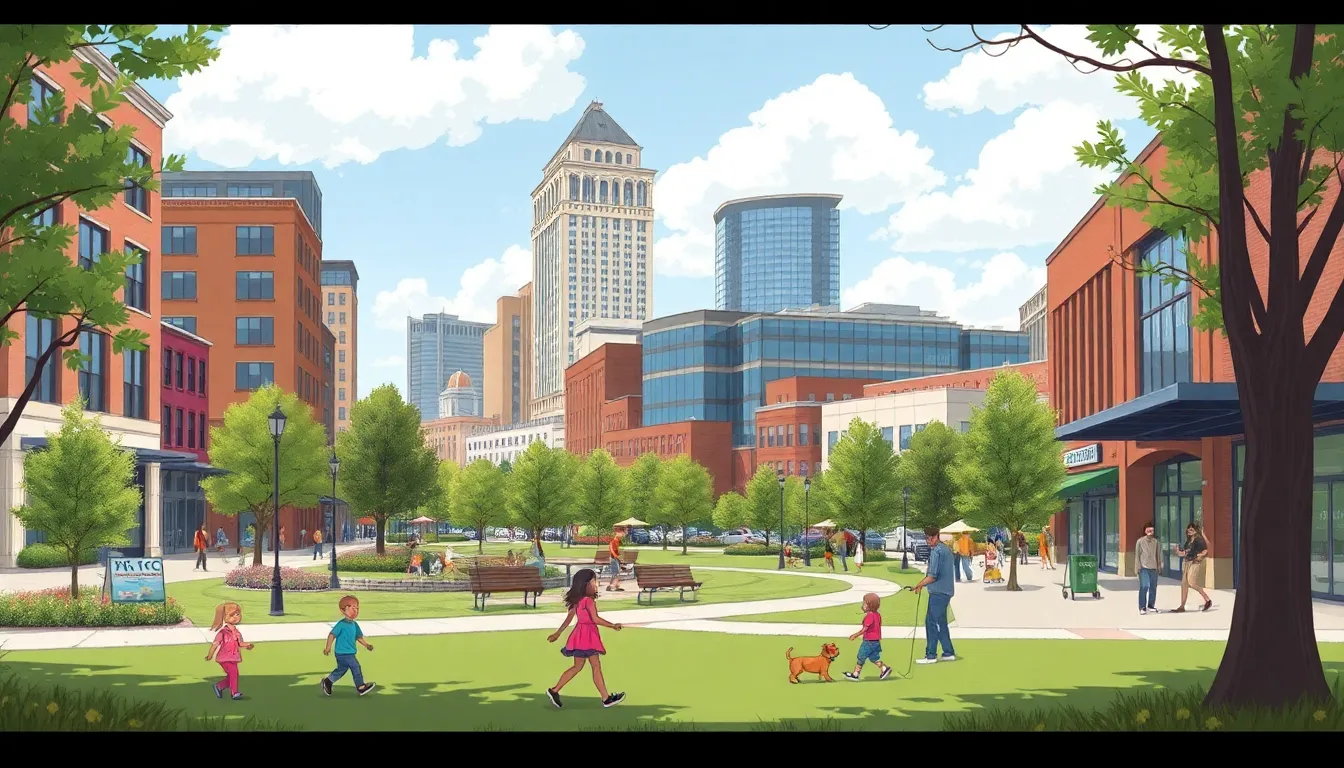Little Rock, Arkansas, often surprises visitors with its charm and Southern hospitality. But as with any city, safety is a major concern. Is it a hidden gem or a place where you might find yourself dodging more than just the occasional rain shower?
Table of Contents
ToggleOverview of Little Rock, Arkansas
Little Rock serves as the capital of Arkansas, boasting a rich history and vibrant culture. The city offers a mix of urban and natural attractions, appealing to residents and visitors alike. Numerous parks, such as Riverfront Park, provide green spaces for outdoor activities. The Arkansas River serves as a scenic backdrop, enhancing the city’s charm.
Population statistics indicate that approximately 197,000 people live within Little Rock’s city limits. Economic growth continues, with sectors like healthcare, education, and tourism contributing significantly. Notable institutions, such as the University of Arkansas at Little Rock, enrich the local economy and provide educational opportunities.
Crime rates in Little Rock do vary, with certain neighborhoods experiencing higher incidents. While the overall crime rate is above the national average, many areas remain safe and desirable for families and individuals. Community initiatives and neighborhood watch programs aim to improve safety and response times for emergencies.
Local law enforcement actively engages with the community, fostering relationships and working to ensure safety for all. Events such as National Night Out strengthen ties between police and residents, promoting information sharing about safety and crime prevention.
Overall, Little Rock presents a blend of opportunity, community spirit, and safety concerns. Awareness of local resources and an understanding of different neighborhoods helps residents and visitors navigate the city effectively.
Crime Statistics in Little Rock

Little Rock’s crime statistics reflect a mix of challenges and progress, warranting attention from residents and visitors. Understanding these numbers helps evaluate safety in the city.
Violent Crime Rates
Violent crime in Little Rock showed a significant rate of 8.15 incidents per 1,000 residents in 2022, according to the FBI’s Uniform Crime Reporting program. Homicides occurred at a rate of 22 per year, contributing to a growing concern. Assaults represented the most common type of violent crime, with over 500 reported instances annually. Many neighborhoods, particularly those close to downtown, experience higher rates, while suburbs typically report lower incidents. Efforts by local law enforcement include community engagement and increased patrols, targeting high-crime areas for better safety.
Property Crime Rates
Property crime rates in Little Rock stand at 41.2 per 1,000 residents, highlighting a notable area for concern. The prevalent types of property crimes include theft, burglary, and motor vehicle theft, making up a substantial portion of reported incidents. In 2022, over 3,000 burglaries occurred across the city, impacting both residents and businesses. Some neighborhoods face increased property crime, while others maintain relative safety. Local initiatives, such as neighborhood watch programs, aim to deter potential crimes and strengthen community ties.
Factors Influencing Safety
Safety in Little Rock is impacted by various elements. Understanding these factors can help residents and visitors navigate the city effectively.
Community Initiatives
Community initiatives play a vital role in enhancing safety. Engagement programs encourage residents to look out for one another. Neighborhood watch programs foster collaboration between citizens and law enforcement. Local organizations often host events that promote awareness of safety practices. Schools also participate by educating students on crime prevention measures. These collective efforts aim to build a sense of unity, empowering community members to contribute to a safer environment.
Local Law Enforcement
Local law enforcement is proactive in addressing crime concerns in Little Rock. The police department focuses on community policing strategies to build trust and transparency. Regular patrols in high-crime areas aim to deter criminal activity, creating safer neighborhoods. Officers participate in community events to strengthen relationships with residents. In 2022, the department implemented innovative technology to improve response times and efficiency. These initiatives exemplify commitment to safety, demonstrating a thoughtful approach to crime prevention.
Neighborhood Safety Insights
Little Rock’s neighborhood safety varies significantly, with some areas offering a secure environment while others require caution. Understanding these nuances helps residents and visitors navigate the city wisely.
Safe Areas in Little Rock
The Heights and Hillcrest neighborhoods rank among the safest in Little Rock. With well-lit streets and active community involvement, these areas foster a sense of security. According to local statistics, violent crime rates in these regions remain notably lower than the city average. Families appreciate the nearby parks and quality schools, enhancing overall neighborhood appeal. Many residents describe these neighborhoods as welcoming, with friendly interactions and a tight-knit community atmosphere.
Areas to Exercise Caution
Certain neighborhoods in Little Rock warrant heightened awareness due to increased crime rates. Downtown Little Rock, while vibrant, has experienced a rise in violent and property crimes. Specific streets, particularly near nightlife areas, report higher incidents of theft and vandalism. Similarly, parts of the Arkansas State University area show notable crime statistics, emphasizing caution when visiting after dark. Awareness of surroundings and staying informed about local crime trends can significantly enhance safety in these zones.
Resident Perspectives on Safety
Residents of Little Rock often share their experiences regarding safety in the city. Many express a sense of community, noting that friendly neighbors contribute to a positive atmosphere. Observations indicate that areas like The Heights and Hillcrest maintain lower crime rates, making them attractive places to live. Safety concerns arise in certain neighborhoods, particularly near downtown, where higher crime incidents occur.
Community engagement is another key factor in how residents perceive safety. Local programs, such as neighborhood watches, foster communication between citizens and law enforcement. Outreach initiatives, organized by the police department, help build trust and increase awareness around crime prevention strategies. Many residents take pride in participating in these efforts, creating a united front against crime.
Statistics highlight significant variations in safety throughout the city, influencing resident perspectives. For example, violent crime rates stand at 8.15 incidents per 1,000 residents, which often shapes opinions on overall safety. In particular, the prevalence of assaults and an average of 22 annual homicides raise valid concerns for those living in higher-risk areas.
Education on crime prevention also plays a role in local safety perceptions. Schools provide students and parents with valuable information on how to remain safe in their neighborhoods. Awareness campaigns remind residents to stay vigilant, especially in areas known for increased nightlife activity, where caution is advised.
Overall, perspectives on safety in Little Rock reflect a mix of community spirit and awareness. Many residents remain hopeful, believing ongoing efforts can further enhance safety throughout the city.
Little Rock, Arkansas offers a unique blend of culture and community spirit. While safety concerns exist, particularly in certain neighborhoods, many areas remain welcoming and secure. Community initiatives and local law enforcement efforts are crucial in fostering a sense of safety among residents. By staying informed and engaged, both locals and visitors can navigate the city confidently. Ultimately, Little Rock can be enjoyed as a vibrant destination with its rich history and Southern charm, as long as one remains aware of their surroundings.




